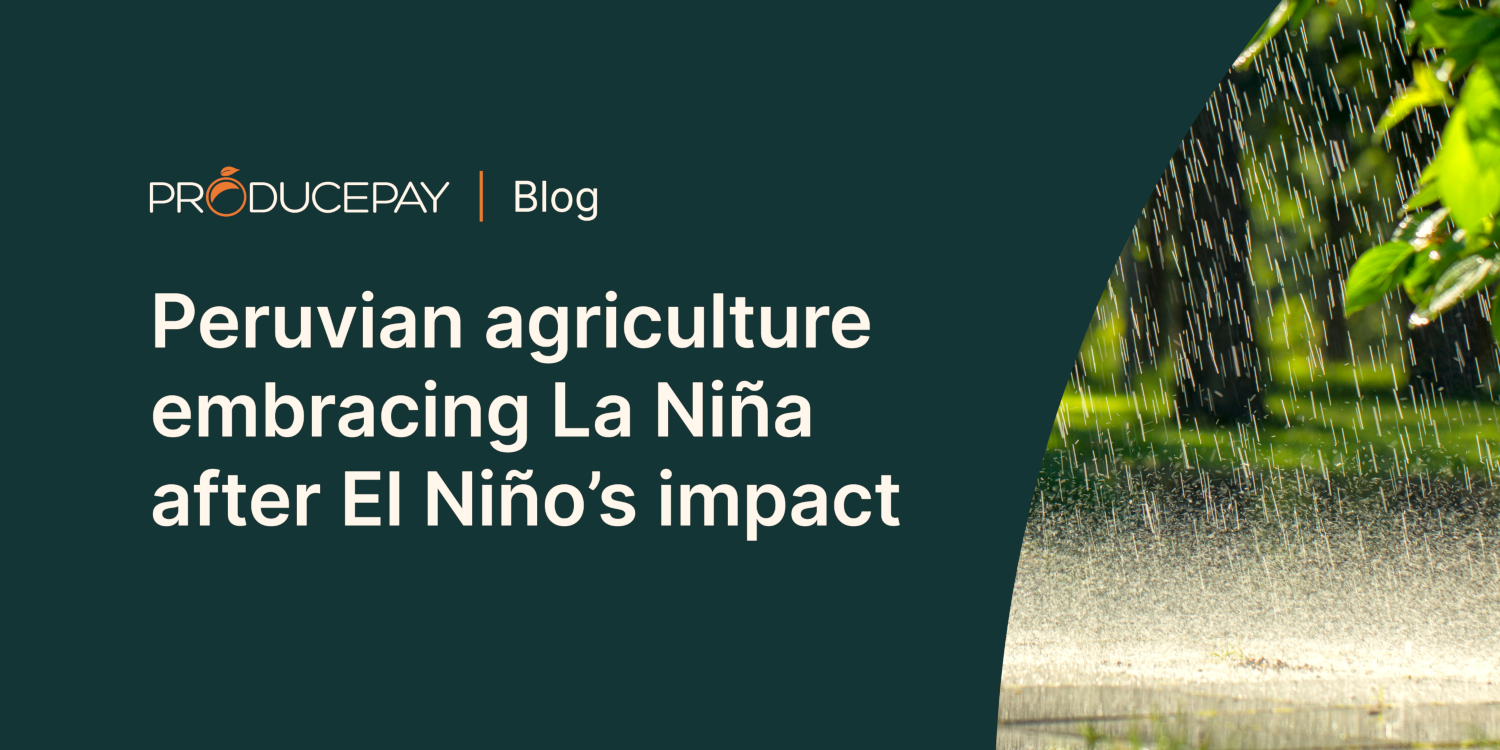
Peruvian agriculture embracing La Niña after El Niño’s impact
After enduring the havoc caused by the El Niño weather phenomenon, agriculture in Peru now sees hope in the transition phase of La Niña, which promises to positively impact the industry in the South American country.
In this situation, it is crucial for growers and traders to stay informed and have the appropriate financial and technological tools to tackle the challenges that these weather phenomena may bring.
The impact of El Niño on agriculture in Peru
Climate change has been the main driver behind the crisis in Peruvian agriculture, with the El Niño phenomenon playing a significant role, heavily impacting the production of various commodities, especially blueberries, mangoes, and asparagus.
This affected Peru’s exports, particularly concerning blueberries, where the country holds the title of the largest exporter globally. In the 2023-2024 campaign, Peruvian blueberry exports dropped by 41%, while mango exports fell even more, by 67%.
El Niño brought high temperatures and intense rainfall, mainly affecting coastal areas, where blueberry and mango production is concentrated. Experts point out that the impact across the entire area has been the most severe in the last 20 years, contributing to the loss of 34,000 jobs related to agricultural activities between January and November 2023.
The impact of El Niño was not only felt by growers and exporters but also by buyers and distributors in the United States and the Netherlands, the main commercial destinations for Peruvian produce, who had to adjust their marketing strategies.
Transition to La Niña offers hope
La Niña is the cooling phase that usually brings effects opposite to those of El Niño, in this case, lower temperatures and less intense rainfall. It is expected that this transition period will help in the recovery of Peruvian agriculture this year, since rainfall could be better distributed, thereby reducing floods and landslides.
However, La Niña could also eventually trigger droughts. Various agricultural regions in Peru have already been facing drought conditions for more than 3 years, areas where the problem could worsen with the arrival of this phenomenon.
Blueberry and mango growers should take advantage of this phase, but at the same time remain vigilant about the evolution of La Niña and prepare – operationally and financially – for any adverse effects.
Although it is still too early to determine its impact and duration, it is estimated that La Niña could be present until the middle of 2025.
ProducePay as an ally against climate challenges
Given the challenges posed by climate phenomena in Peruvian agriculture, the need for adaptation and strengthening is more crucial than ever. That’s why we facilitate a more connected supply chain, through access to capital, technology and a global network.
Our Predictable Commerce Platform gives buyers and sellers unprecedented access to each other, including over 1,000 verified growers in over 20 countries and across more than 60 commodities to ensure a steady produce supply.
Moreover, in a context where adapting to climate change is fundamental for the survival of agricultural companies, our financing solutions can boost their implementation of strategies and technology that can allow them to successfully confront climate impacts.
Sources: Fresh Fruit Portal, Infobae

